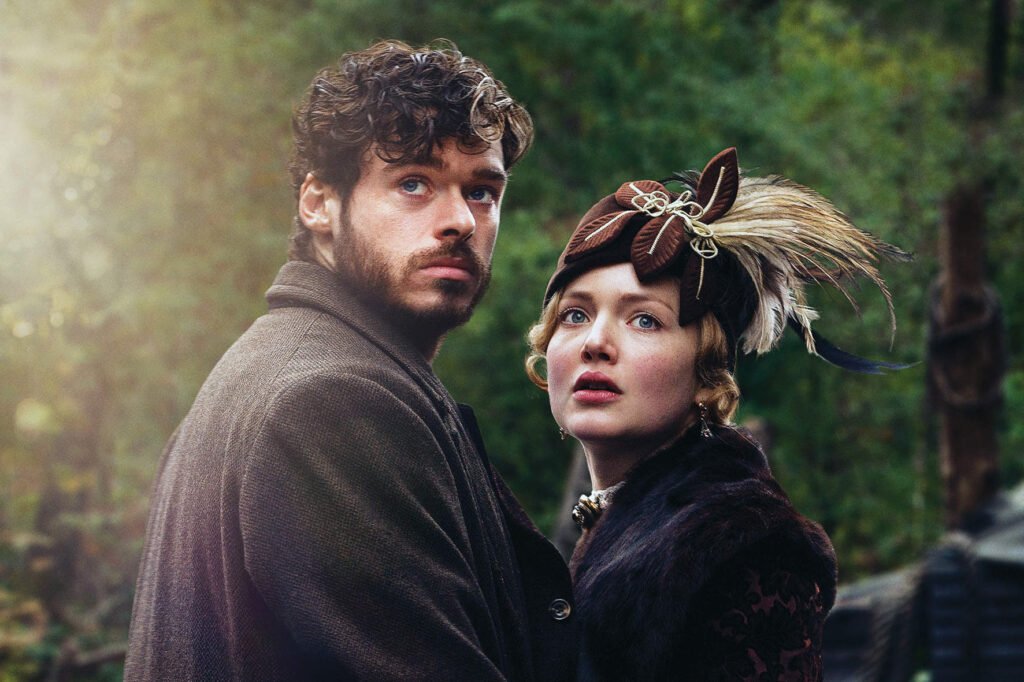In November 1960, the release of Lady Chatterley’s Lover by D.H. Lawrence captivated the UK.
The novel’s British publication followed a highly publicized trial that highlighted the growing divide between traditional British values and emerging liberal attitudes.
Penguin Books, the publisher, aimed to challenge the Obscene Publications Act by releasing an uncensored edition of the book, a decision that led to a landmark trial and a nationwide rush to experience what had once been forbidden.
Before 1960, British readers were barred from accessing Lady Chatterley’s Lover, as the law deemed it indecent.
When Penguin Books decided to publish the novel in its entirety, they were testing the boundaries of the recently revised Obscene Publications Act, which allowed works with “literary merit” to be published even if they contained shocking material.
The novel, depicting an intense affair between Lady Constance Chatterley, an aristocratic woman, and her working-class lover, Oliver Mellors, was considered controversial for its explicit language and depictions of female sexuality.
Lawrence had written it to reclaim sexuality as a subject of value in literature, rather than one of shame.
Penguin informed the Director of Public Prosecutions (DPP) of its plans, and Reginald Manningham-Buller, the government’s chief legal adviser, soon approved legal action against the publisher after reading the first few chapters.
This led to one of the most anticipated trials of the era, pitting defenders of free expression against the moral standards of the establishment.
Penguin assembled an impressive roster of 35 expert witnesses, including prominent writers and academics, to support their case.
Richard Hoggart, a leading intellectual, became a key witness, arguing that Lady Chatterley’s Lover was a moral and almost “puritan” novel, despite its inclusion of realistic language.
The prosecution, led by Mervyn Griffith-Jones, argued that the novel was nothing more than pornographic.
He famously asked the jury, “Would you approve of your sons and daughters reading it? … Is it a book you would even wish your wives and servants to read?”
His rhetoric reflected the outdated attitudes of Britain’s ruling class, which saw open discussions of sexuality as taboo.
The presiding judge, Mr. Justice Byrne, voiced concerns about the book’s affordability, fearing its widespread availability.
These comments soon became symbols of the establishment’s disconnect from a more liberal public.
After six days, the jury returned a unanimous “not guilty” verdict, making Lady Chatterley’s Lover the first book to be defended and cleared under the new Act.
Penguin was prepared for this outcome and quickly released 200,000 copies of the novel, which sold out on the first day.
Within three months, three million copies were sold, an overwhelming response that underscored the public’s eagerness to break away from traditional constraints.
The trial’s outcome marked a shift in British society, as censorship barriers began to fall. Readers embraced Lady Chatterley’s Lover not only for its story but also as a symbol of freedom.
Many buyers, however, were still hesitant to ask for it directly.
As one bookseller noted, customers would either whisper “Lady C” or simply hand over the exact price, wary of naming the book aloud.
Also read: Martha Stewart Playfully Calls Ryan Reynolds “Not So Funny” In Real Life
